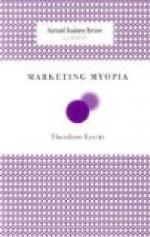How is it possible to maintain that, in the fermentation of water containing nothing but sugar, the soluble portion of the yeast does not act, either in the production of new globules or the perfection of old ones, when we see, in the preceding experiment, that after this nitrogenous and mineral portion has been removed by boiling, it immediately serves for the production of new globules, which, under the influence of the sowing of a mere trace of globules, causes the fermentation of so much sugar? [Footnote: It is important that we should here remark that, in the fermentation of pure solution of sugar by means of yeast, the oxygen originally dissolved in the water, as well as that appropriated by the globules of yeast in their contact with air, has a considerable effect on the activity of the fermentation. As a matter of fact, if we pass a strong current of carbonic acid through the sugared water and the water in which the yeast has been treated, the fermentation will be rendered extremely sluggish, and the few new cells of yeast which form will assume strange and abnormal aspects. Indeed this might have been expected, for we have seen that yeast, when somewhat old, is incapable of development or of causing fermentation even in a fermentable medium containing all the nutritive principles of yeast if the liquid has been deprived of air; much more should we expect this to be the case in pure sugared water, likewise deprived of air.]
In short, Liebig is not justified in saying that the solution of pure sugar, caused to ferment by means of yeast, contains none of the elements needed for the growth of yeast, neither nitrogen, sulphur nor phosphorus, and that, consequently, it should not be possible, by our theory, for the sugar to ferment. On the contrary, the solution does contain all these elements, as a consequence of the introduction and presence of the yeast.
Let us proceed without examination of Liebig’s criticisms:




